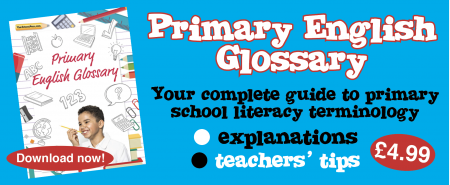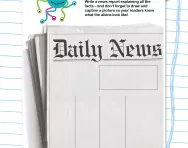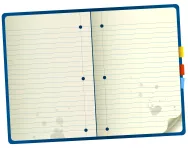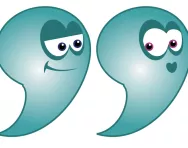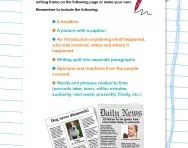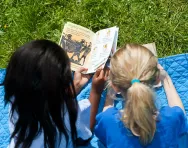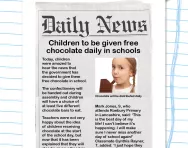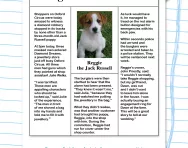Important update from TheSchoolRun
For the past 13 years, TheSchoolRun has been run by a small team of mums working from home, dedicated to providing quality educational resources to primary school parents. Unfortunately, rising supplier costs and falling revenue have made it impossible for us to continue operating, and we’ve had to make the difficult decision to close. The good news: We’ve arranged for another educational provider to take over many of our resources. These will be hosted on a new portal, where the content will be updated and expanded to support your child’s learning.
What this means for subscribers:
- Your subscription is still active, and for now, you can keep using the website as normal — just log in with your usual details to access all our articles and resources*.
- In a few months, all resources will move to the new portal. You’ll continue to have access there until your subscription ends. We’ll send you full details nearer the time.
- As a thank you for your support, we’ll also be sending you 16 primary school eBooks (worth £108.84) to download and keep.
A few changes to be aware of:
- The Learning Journey weekly email has ended, but your child’s plan will still be updated on your dashboard each Monday. Just log in to see the recommended worksheets.
- The 11+ weekly emails have now ended. We sent you all the remaining emails in the series at the end of March — please check your inbox (and spam folder) if you haven’t seen them. You can also follow the full programme here: 11+ Learning Journey.
If you have any questions, please contact us at [email protected]. Thank you for being part of our journey it’s been a privilege to support your family’s learning.
*If you need to reset your password, it will still work as usual. Please check your spam folder if the reset email doesn’t appear in your inbox.
What is journalistic writing?

What is journalistic writing?
Children learn about newspaper articles (or journalistic writing) as part of the English curriculum. This non-fiction genre is often taught in Year 6, usually taught over three or four weeks.
At the start of the unit, children are shown various newspaper articles and are asked to comment on the features of journalistic writing which include:
- headline
- byline
- photos with captions
- words presented in columns on the page
- fact
- opinion
- direct speech (quotations)
- reported speech
How is journalistic writing taught in primary school?
On starting this unit, a teacher will usually give children a variety of newspaper articles to look at. The class will then discuss the features, possibly starting with the headline.
Headlines
The teacher will ask the children why the headline is in large, bold font. They may need to explain that the headline acts as a title or heading which tells the reader, at a glance, what the article is about. It could be a straightforward explanation of fact, for example:
It could also be a humorous play on words. For example, the headline on an article about a local Easter egg hunt might be:

Articles will vary as to how they are set out.
Some articles have bylines, which appear below the headline.
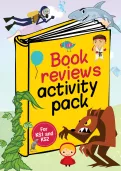
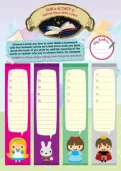
Claim A FREE Book Reviews Activity Pack!
- A huge collection of creative writing & reading comprehension resources
- Explore texts, deepen understanding, share opinions
- For Year 1 to Year 6
Bylines
A byline may include one or all of the following things: the name of the person who wrote the article, their position, the place they travelled to get the story and a brief sentence summing up what the article is about. For example:
- John Smith, Staff Writer, reports on Fairhill Primary Summer Fair
- Melody Orukope, Los Angeles
Captions
Newspaper articles often include photos of the people or events involved. A teacher may discuss with children why this is. For example: if the article was about the biggest ship in the world, people would want to see an actual picture of it, rather than just read the description. If the article was about an important person, you would need to be able to identify them. These photos would usually have captions beneath them, explaining who or what is in the photo.
Fact and opinion in newspaper articles
A teacher will usually take some time reading through particular articles with children so that they get a feel for the language used.
They will usually discuss the difference between fact and opinion in the articles. For example: if they are reading an article in a local newspaper about the egg hunt on Manor Farm they may read the following paragraph:
Last Saturday, children were overjoyed to take part in an egg hunt arranged by Mick Holmes, owner of Manor Farm. Eggs of various colours were hidden all around the farm, and one lucky girl, Faye Whiting, struck gold when she found a giant egg hidden in a pile of hay!
Children would need to get into the habit of being able to spot the opinions (children being 'overjoyed' and one girl being 'lucky') and the facts (the hunt being arranged by Mick Holmes, the egg hidden in a pile of hay).
Direct and indirect speech in journalistic writing
Another feature of journalistic writing is the use of quotations.
Quotations
A quotation is a piece of direct speech that comes from a person associated with the article. Quotations are written in speech marks. Children might be asked to highlight these in the newspaper article, for example:
A teacher may discuss the need for quotations in a newspaper article with the class. Children will be made aware that quotations are essential, because it is important to get people's opinions on various matters. Sometimes a journalist will write about what someone has said using reported speech (also known as indirect speech, highlighted in yellow below):
Writing a newspaper article in primary English
Once the children were fully aware of the features of a newspaper article, they would move onto gathering information to write their own.
- The teacher might choose an event for the whole class to write about, or they might allow the children to choose their own topic.
- The children would be encouraged to start by researching and making notes, so if they were writing a report on the school summer fair they might be asked to use a notepad to make notes on what they could see.
- Children would also need to interview people to provide quotations for their newspaper report, so they might write a list of questions to ask various people at the fair. The teacher might do some work with children beforehand on the difference between open questions (those which require the answer to be expansive, such as: 'Why did you decide to set up a stall here?') and closed questions (those which require only a one-word answer, such as: 'Are you enjoying yourself?')
- Children would then need to look at their notes and interviews and start writing a rough draft of their report. They would need to think about what order to put all the different elements and where to start and end each paragraph. A teacher would usually encourage re-drafting, either by marking the writing suggesting improvements or by asking the children to look at each other's writing.
- Finally, children would need to think about the layout of their newspaper article. They would need to think about their headline, photos and captions and how this was all going to be arranged on the page. They might be given the opportunity to present their finished piece on the computer.
For more information about other non-fiction texts studied in primary school see our parents' guide to non-fiction.

